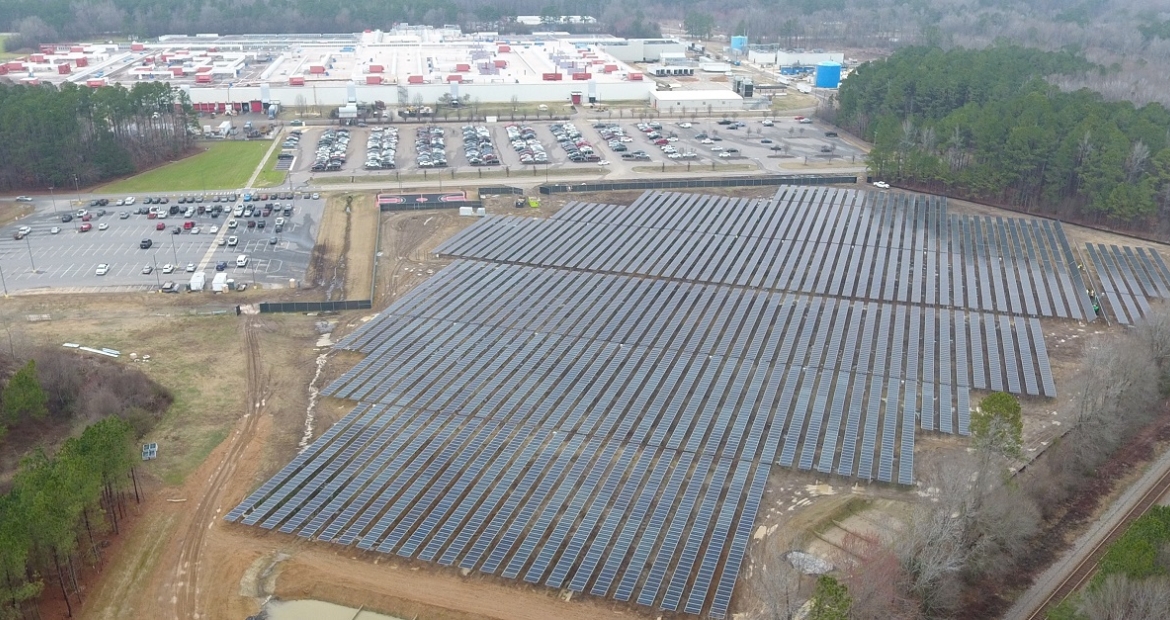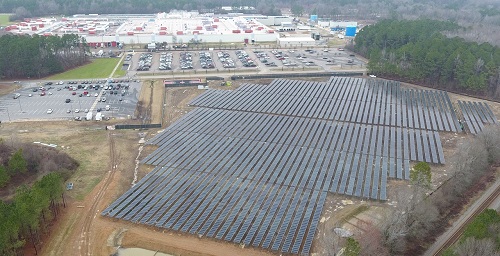Cummins reports key progress toward 2030 environmental goals
Cummins Inc. in 2021 made significant progress toward the company’s 2030 environmental goals, reducing greenhouse gas (GHG) emissions from both its products and facilities, while cutting water use and waste production.

The global power technology leader also made progress in 2021 on its goal for reducing emissions of volatile organic compounds (VOCs) from paint and coating operations and completed foundational work toward its lifecycle planning goal to create a plan for every part to use less, use better and use again.
These findings are included in the company’s recently posted 2021 Sustainability Progress Report.

GHG REDUCTIONS OFF TO GOOD START
Cummins has vowed to take a leadership role on climate action and the company is off to a good start on reducing GHGs. In 2021, Cummins cut GHG emissions from plants and facilities by 31% compared to a 2018 baseline.
Completion of solar projects in India played a key role as did the company’s continued support for an expansion of a northern Indiana (U.S.) windfarm that sends enough renewable power to the grid to roughly offset all of the power Cummins uses statewide from traditional power sources.
The second year of the pandemic also may have played a role but not to the extent that it did in 2020 when most facilities at some point closed for a period of time to help guard against the spread of COVID-19.
Meanwhile, Cummins continued working with customers to reduce Scope 3 GHG emissions from its products in the field and ended 2021 on pace to reach its 2030 goal of cutting those emissions by 55 million metric tons of carbon dioxide (CO2) compared to a baseline year of 2014.
The company reached a cumulative emission reduction of 26.8 million metric tons of CO2 by the end of 2021 by various means, such as working with customers on engine settings to improve fuel economy.
Finally, the company achieved some important initial steps toward the complex 2030 goal of reducing Scope 3 absolute lifetime GHG emissions from newly sold products by 25%. Calculating lifetime emissions requires a number of assumptions and projections.
It is perhaps no surprise that those calculations showed emissions were essentially flat between 2021 and the baseline year of 2018, given it will take a few years before planned changes in product design and fuels yield significant results. Cummins in 2021 developed Destination Zero, the company's strategy to achieve product decarbonization.
PROGRESS ON VOCs, WATER AND WASTE
Cummins is also off to a good start in achieving its goals to reduce emissions of volatile organic compounds (VOCs) from paint and coating operations and reduce both the company’s water use as well as its waste generation.
On VOCs, Cummins’ 2030 goal is to reduce emissions by 50% compared to 2018. In pandemic-altered 2020, the company recorded a 51% reduction compared to its baseline year. Despite operations returning much closer to normal levels in 2021, the reduction in VOC emissions did not change all that much, ending the year at a 45% reduction compared to 2018.
Meanwhile, Cummins recorded a 12.7% reduction in water use in facilities and operations compared to 2018 as it strives for its 2030 goal of a 30% reduction in absolute water consumption from its baseline year. There is still a long way to go, but the company made significant progress.
On waste generation, Cummins’ 2030 goal is to generate 25% less waste in facilities and operations as a percent of revenue compared to a 2018 baseline. In 2021, the company achieved a 4.1% reduction in waste as a percentage of revenue, up from 2.6% in 2020. That also represents a decent first step but, as with water, much work remains to be done.
BUILDING STRONG FOUNDATIONS
On two other goals, Cummins achieved critical steps that will pay off closer to 2030. To create a circular lifecycle plan for every part, Cummins in 2021 recorded two important steps – the creation of a Circular Lifecycle Design Standard and an Optimization Center with the tools that will be needed to meet that standard.

Design standards serve as a roadmap of sorts for engineers as they put together parts designs. The Circular Lifecycle Design Standard includes steps like review by Cummins’ Materials Science function to ensure a part uses the most appropriate materials and processing.
The Optimization Center includes tools like high-powered software so engineers can determine where strength and durability are important in a design and where a part can use a little less material without compromising performance.
Cummins also has a 2030 goal to produce net water benefits that exceed company annual water consumption in all regions Cummins serves. In 2021, the company established Cummins Water Works to address the global water crisis.
The program, which partners with leading water experts around the world to invest and engage in high-impact water projects, is initially focusing on four of the most water-stressed countries: Brazil, India, Mexico and the United States.
Finally, Cummins has established the 2030 goal of reusing or responsibly recycling 100% of packaging plastics and eliminating single-use plastics at dining facilities and employee events. Work on this goal is still in the planning phase with details expected to be released in the company’s 2022 Sustainability Progress Report.
The company’s 2030 goals pick up where Cummins’ 2020 environmental goals left off. While 2030 might seem like a long time away, the Cummins environmental team knows from experience the end of the decade is fast approaching.
Related Tags